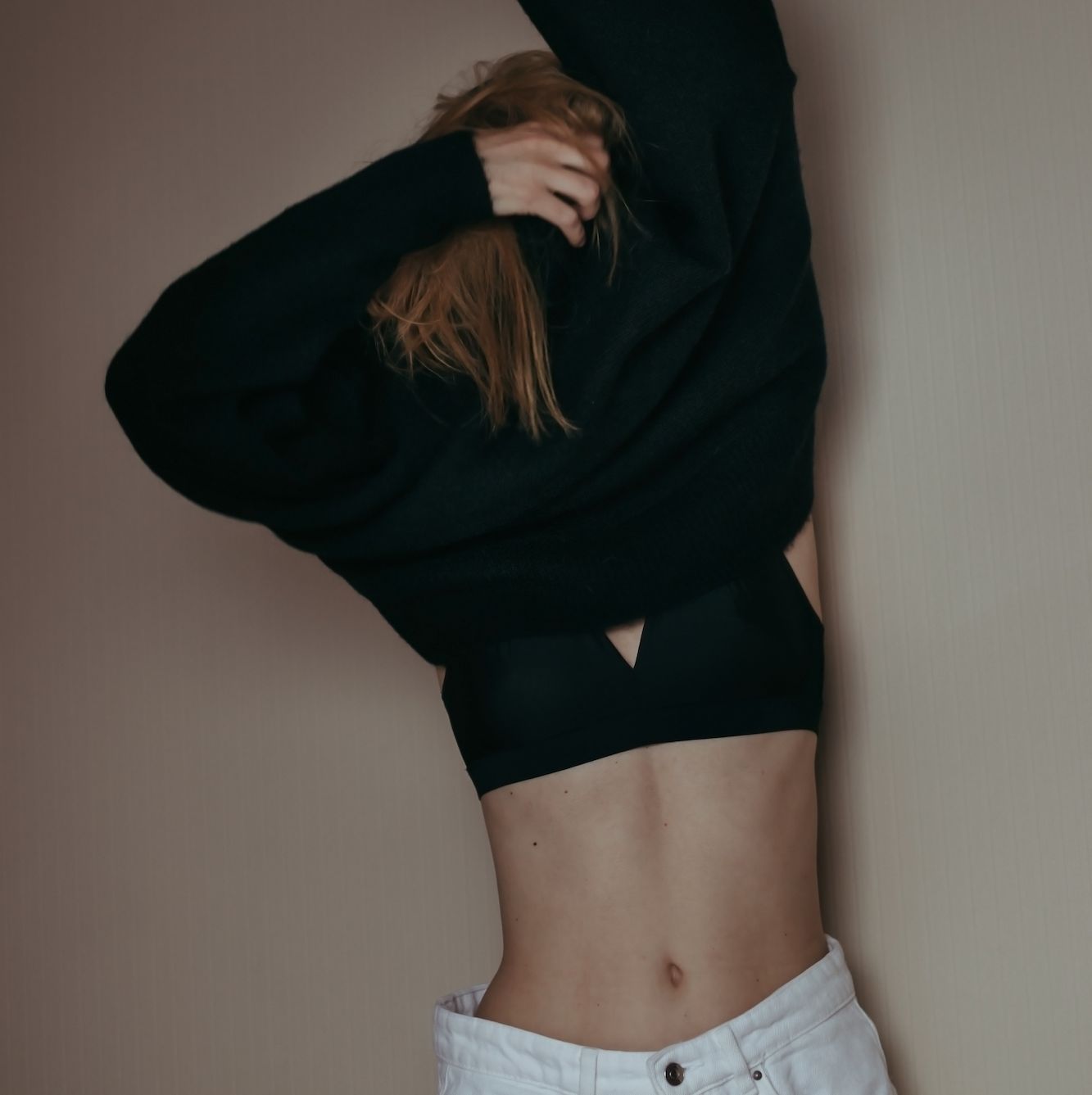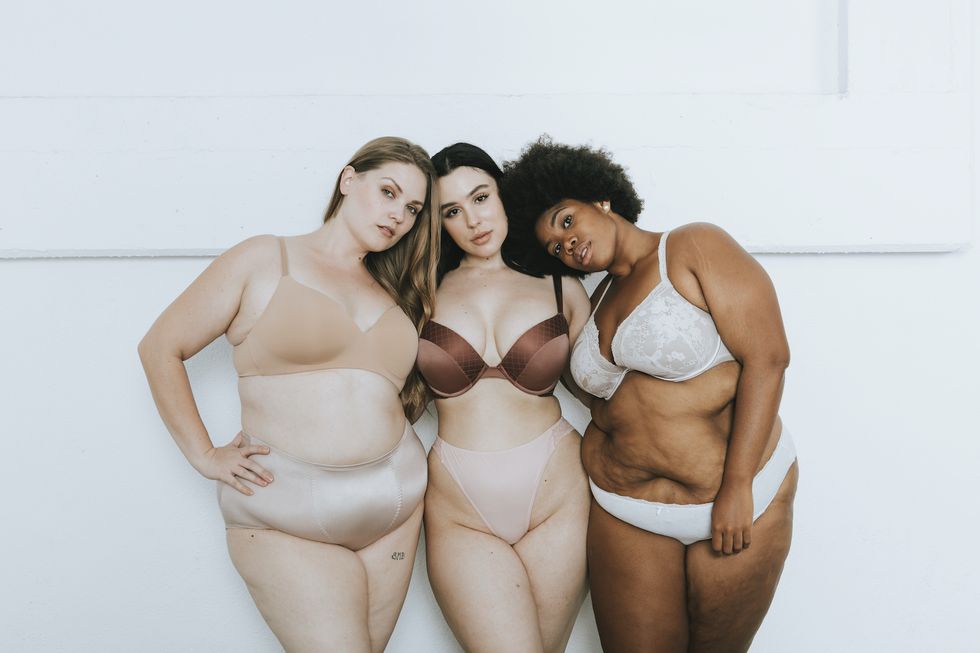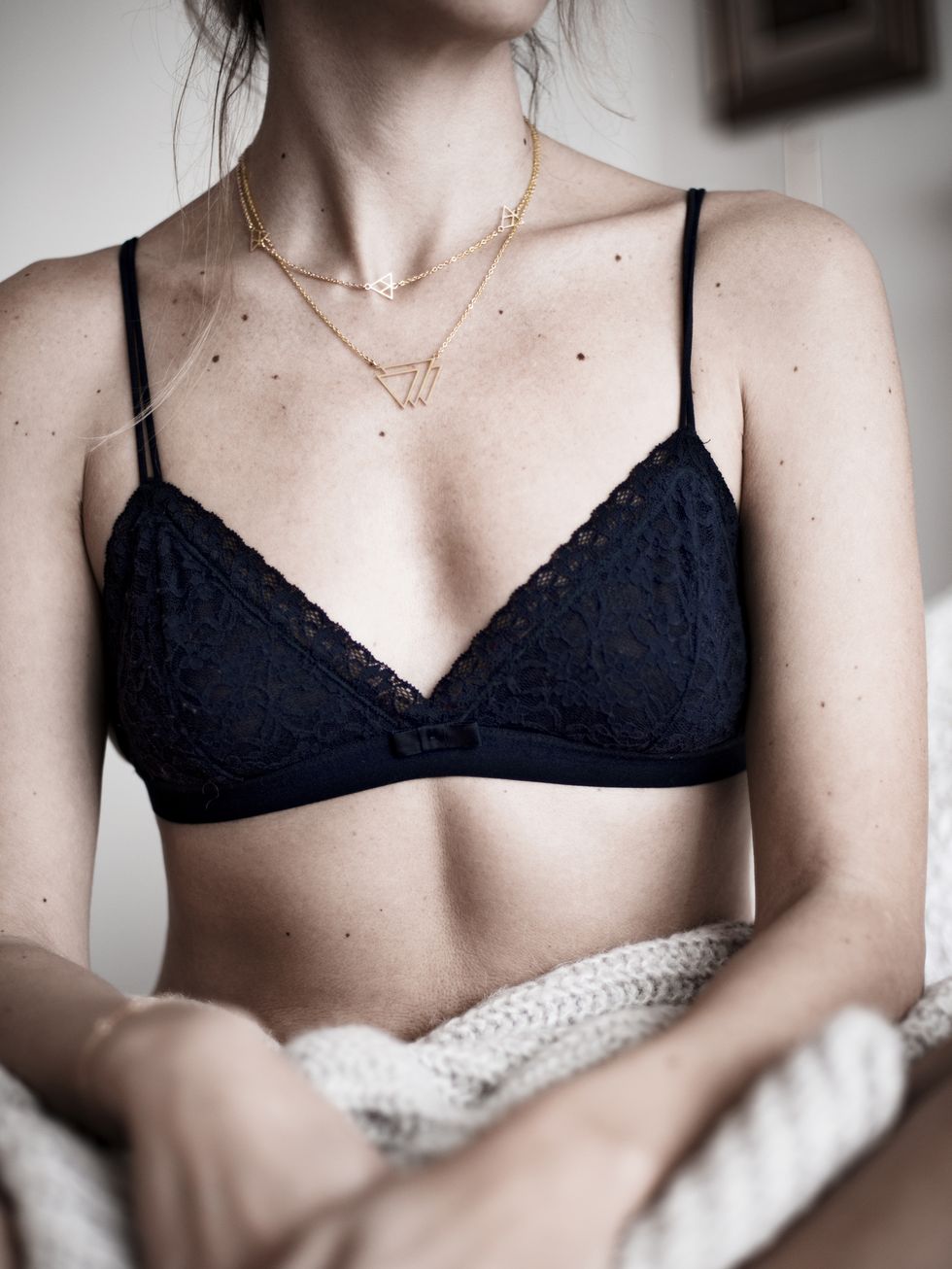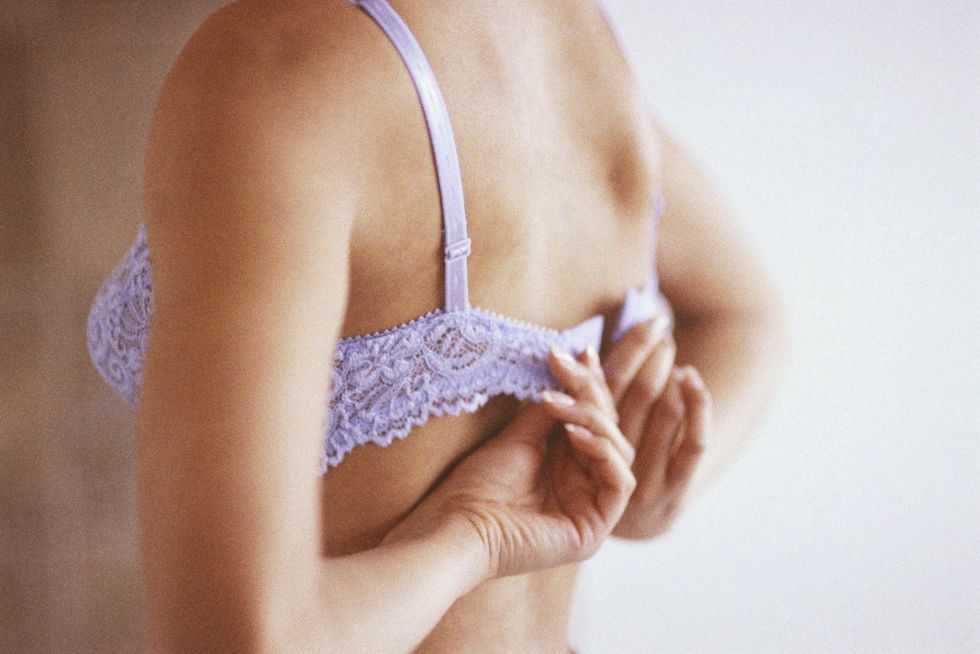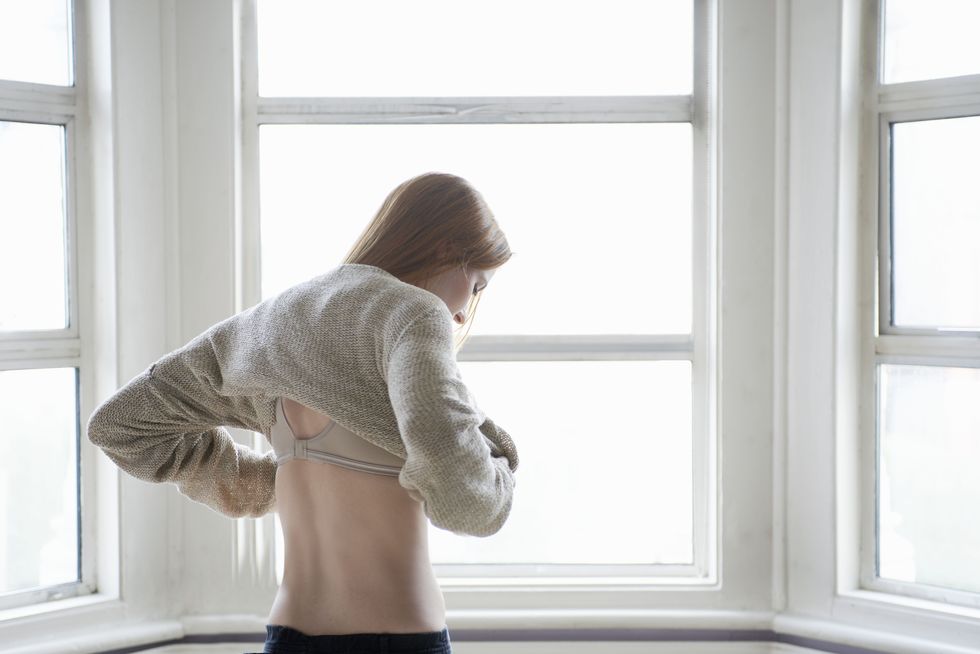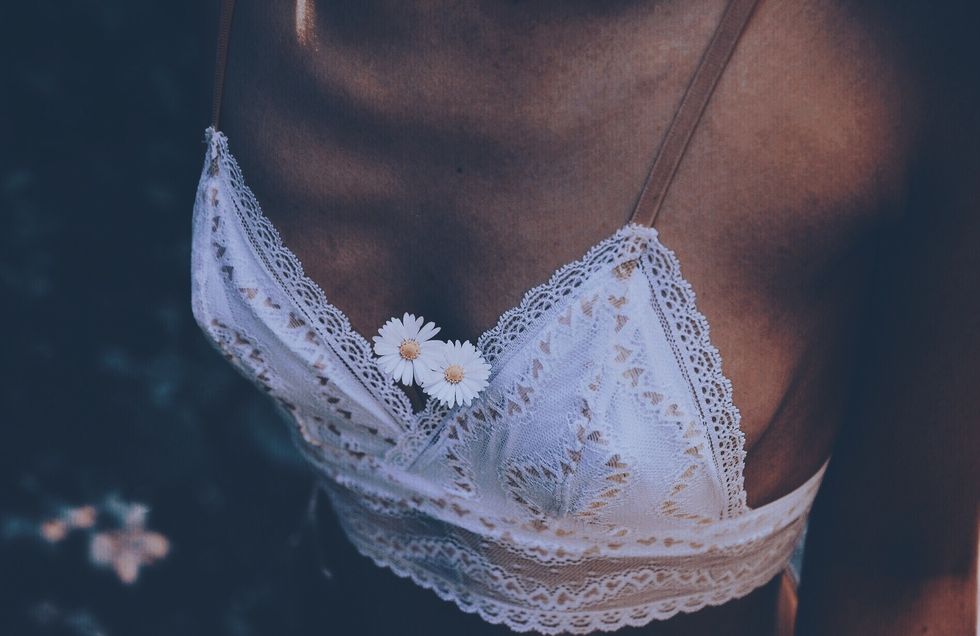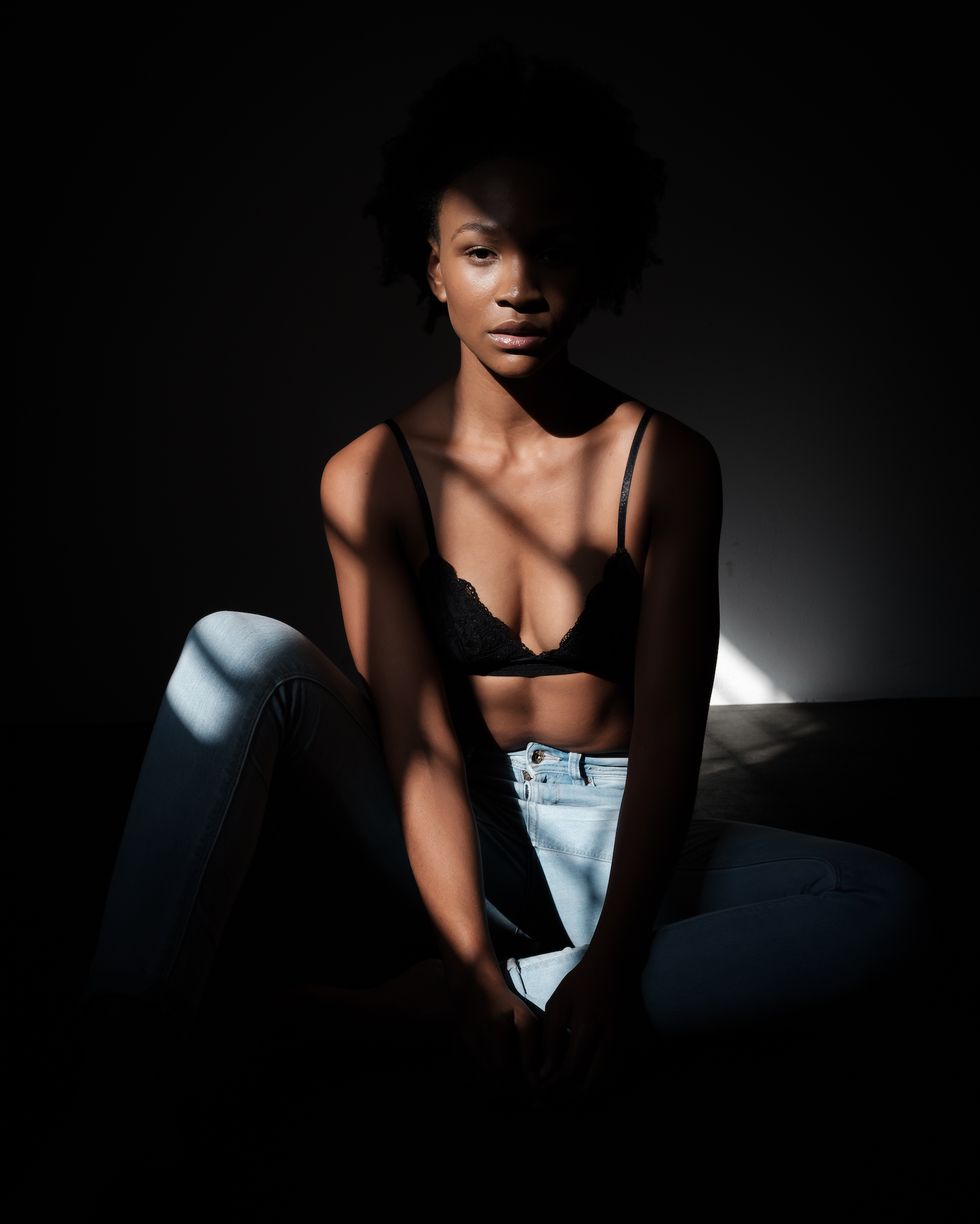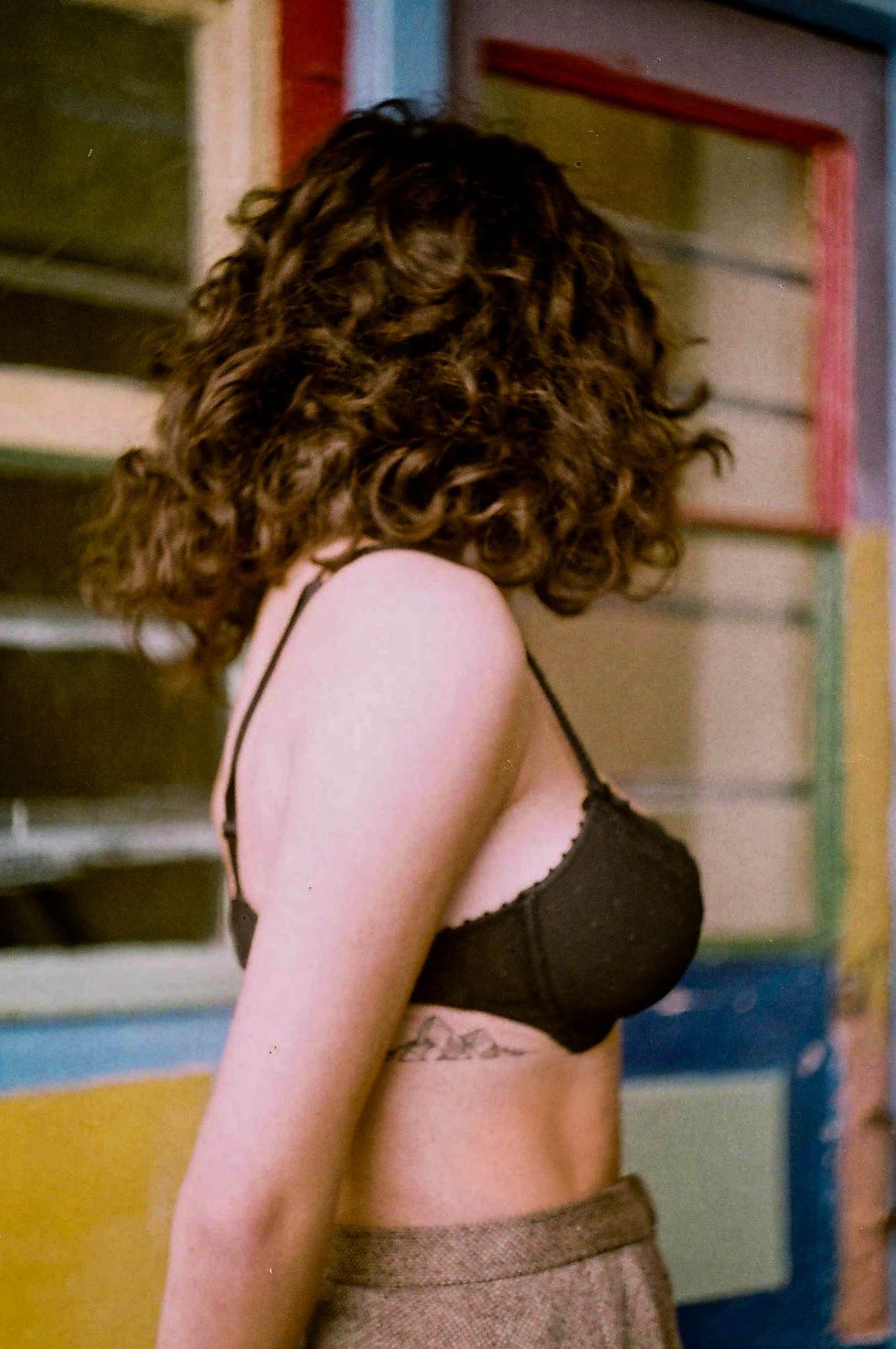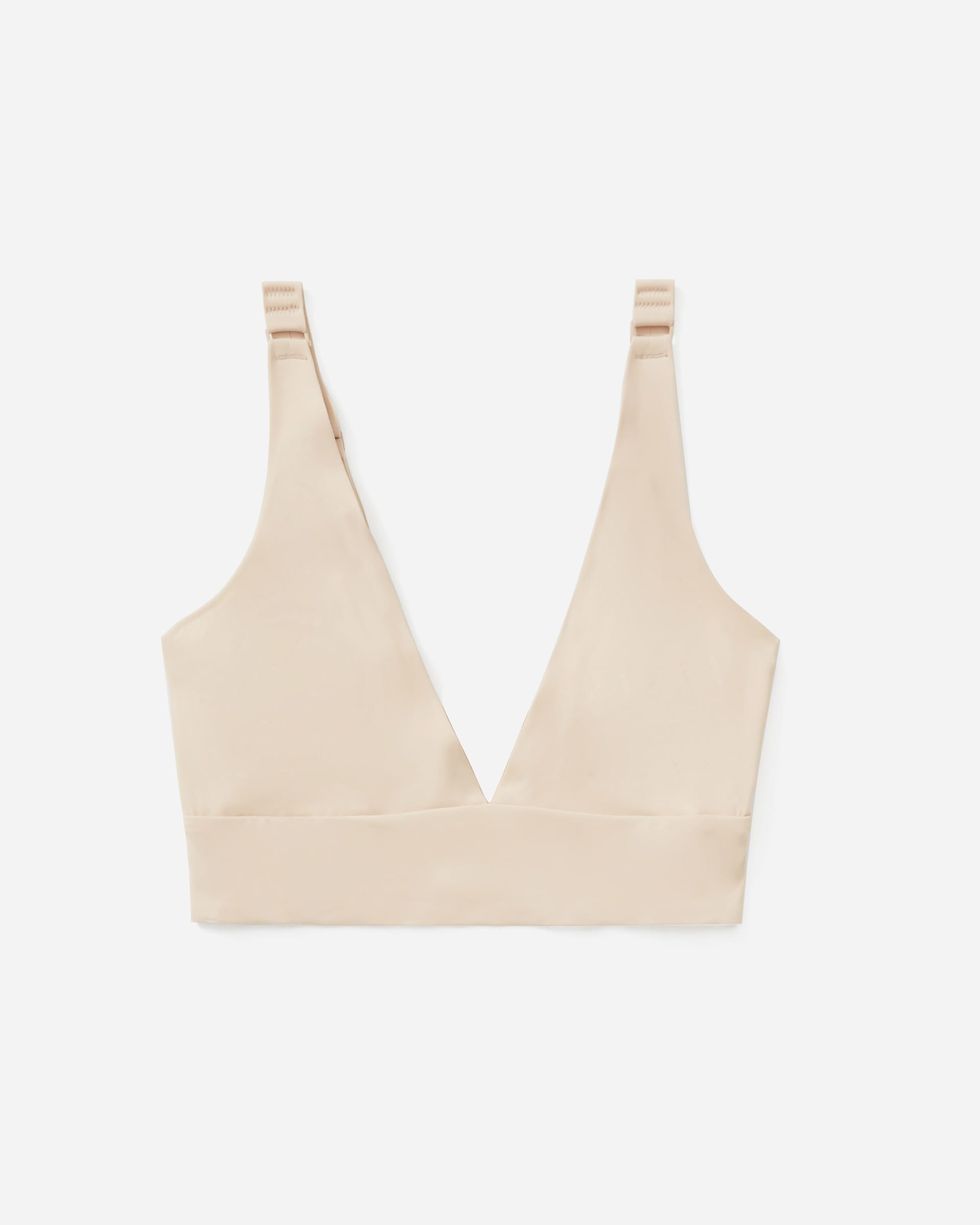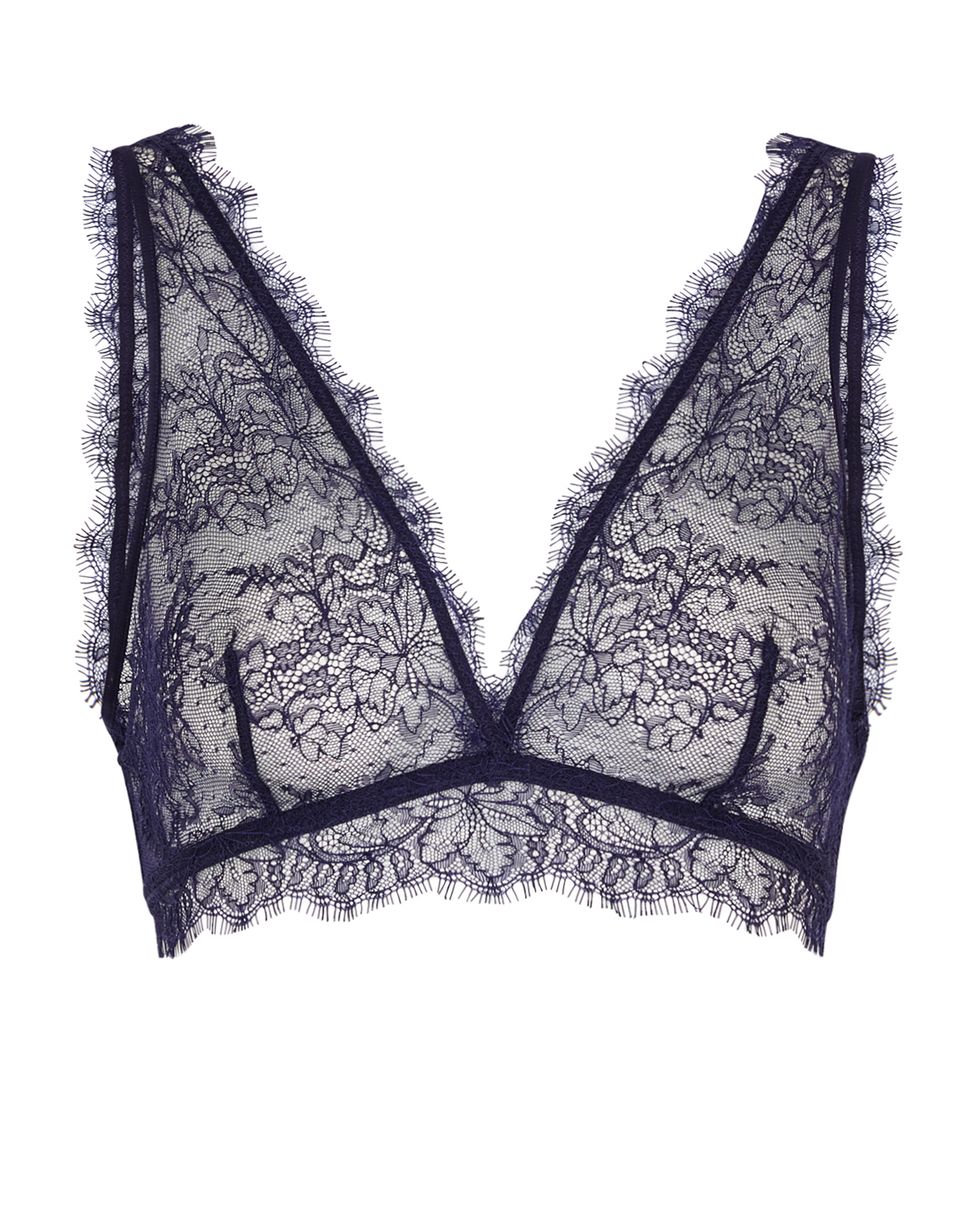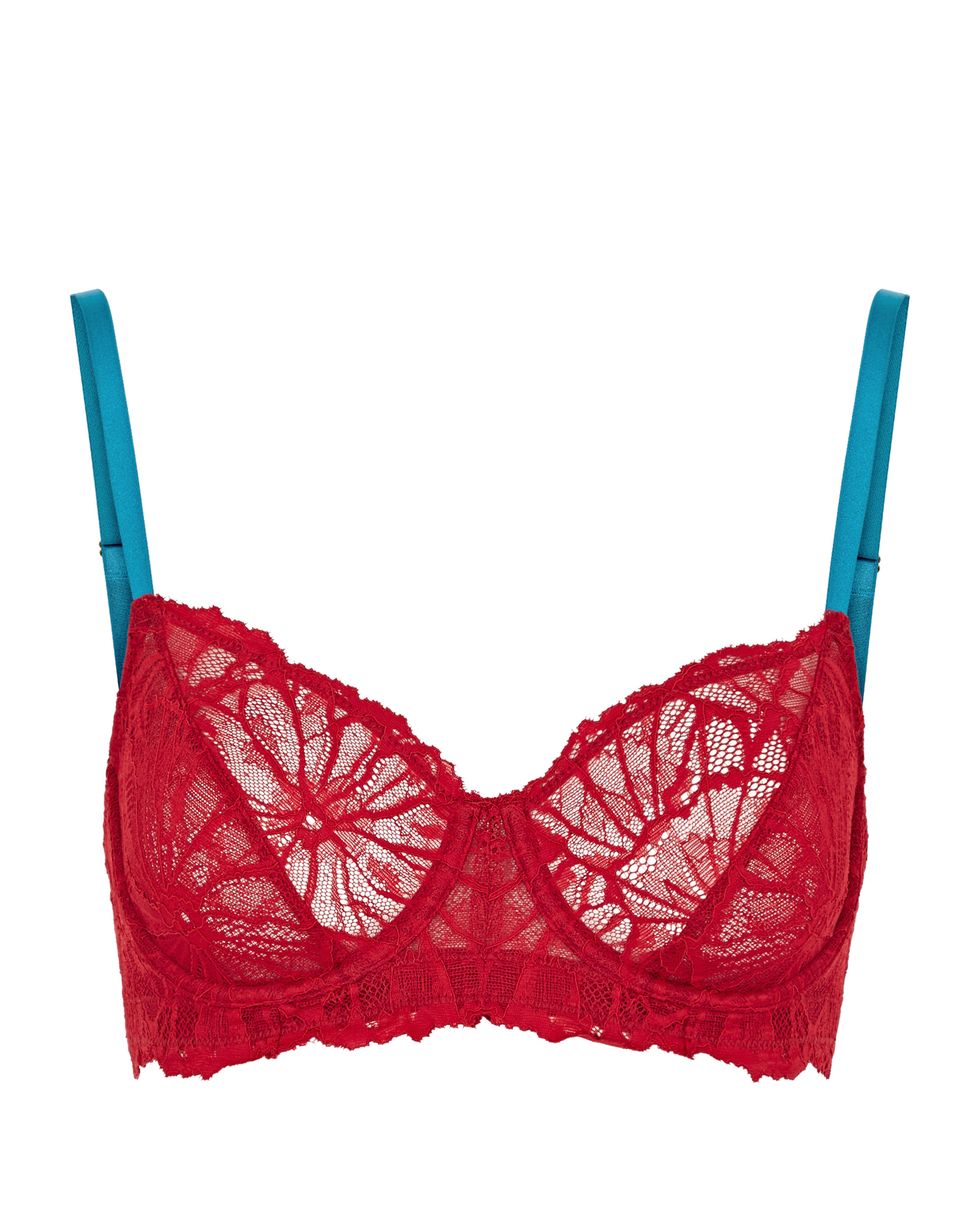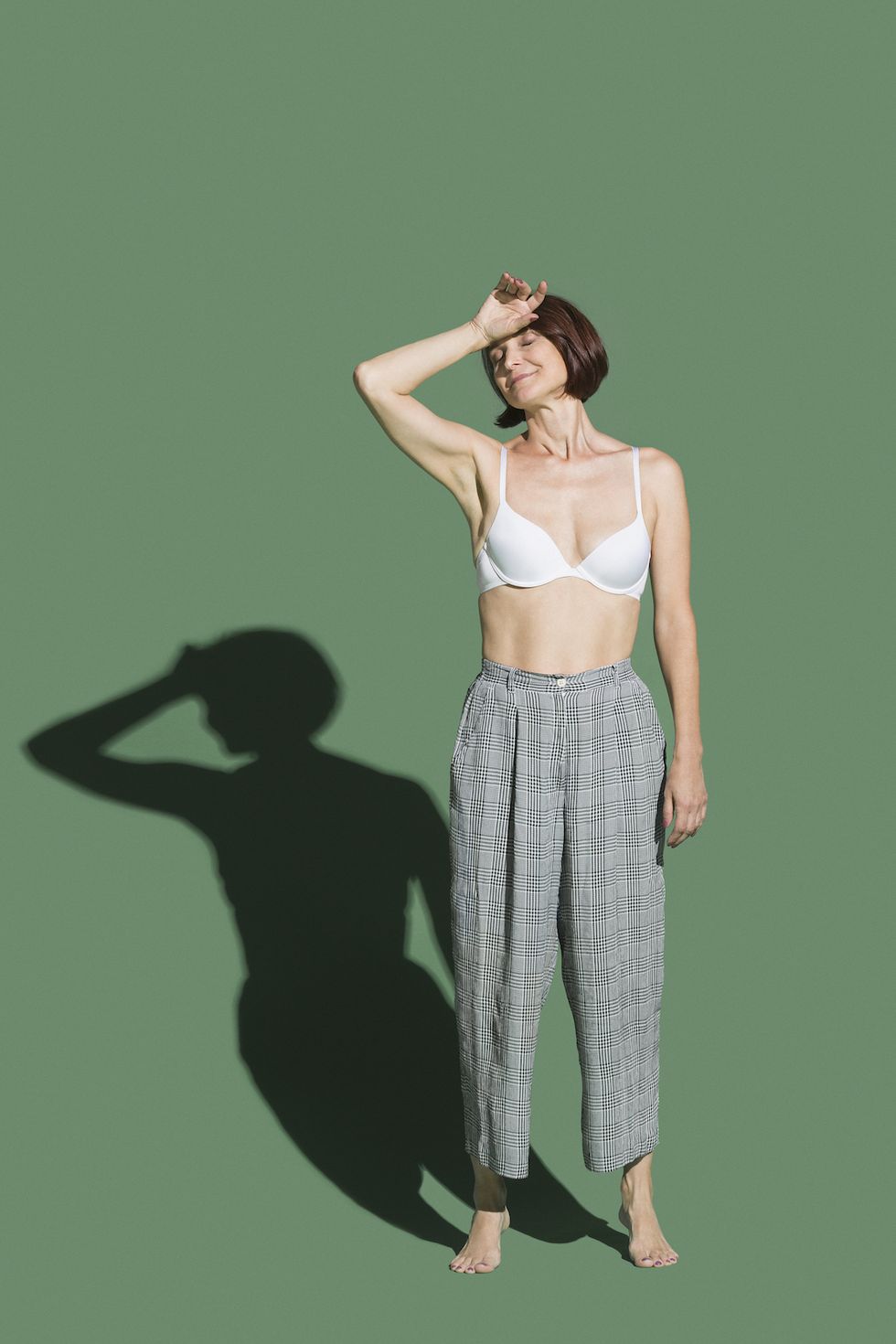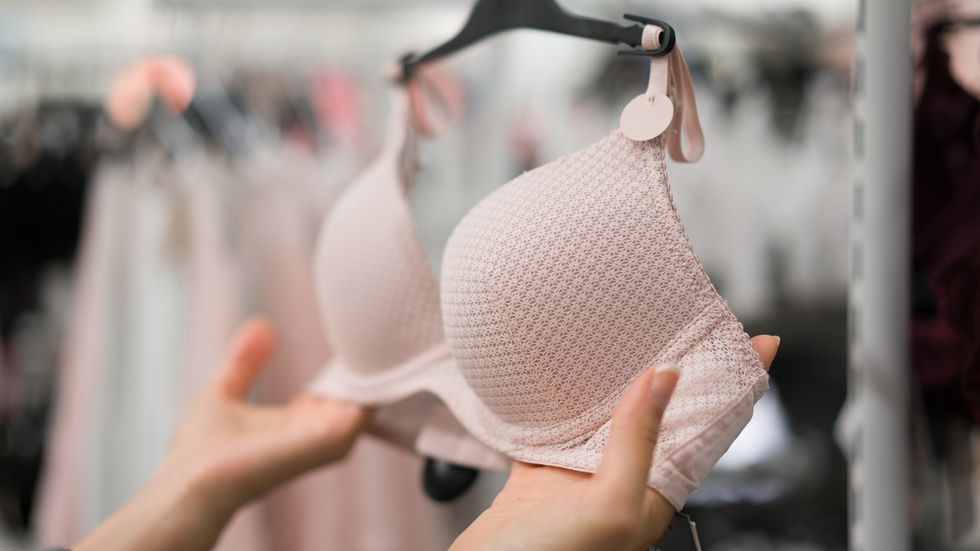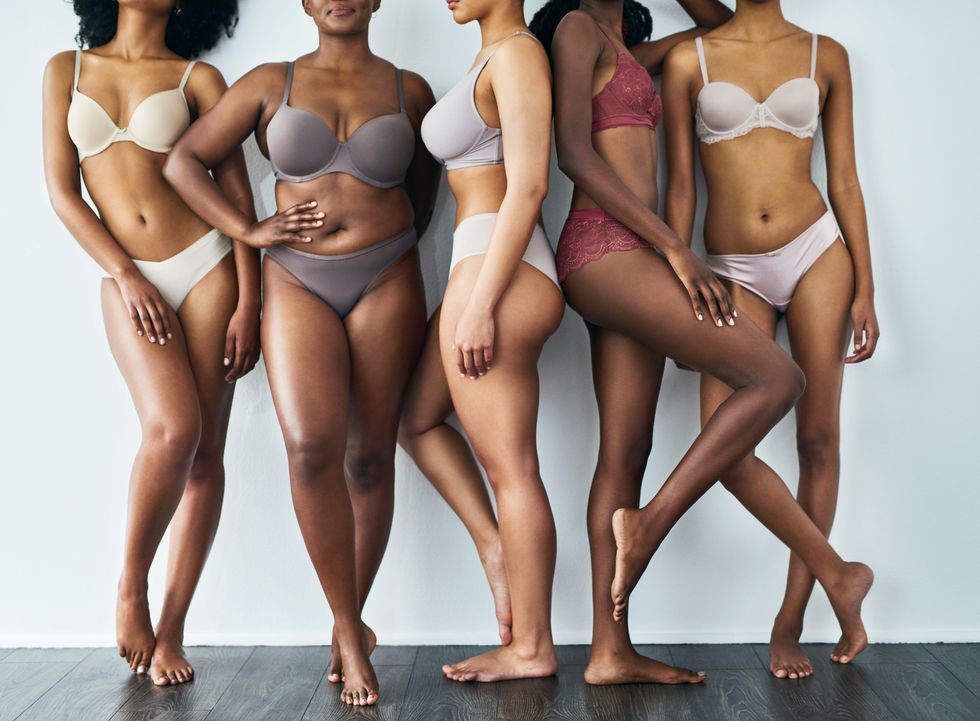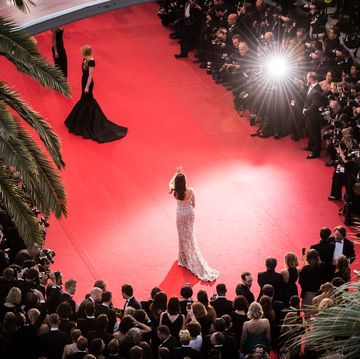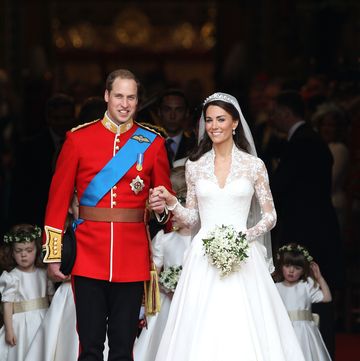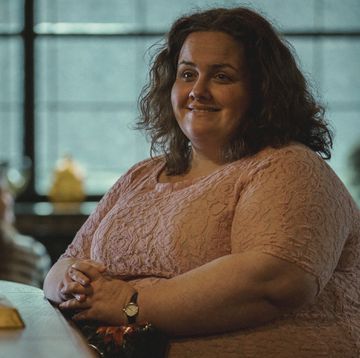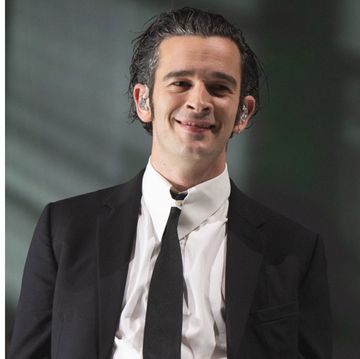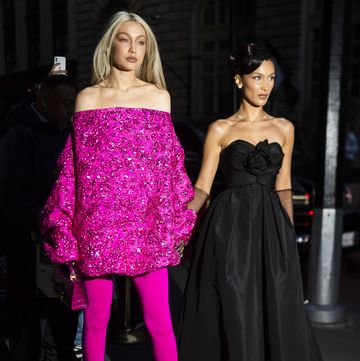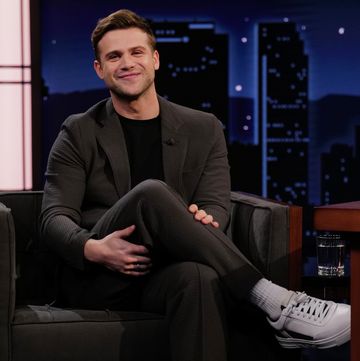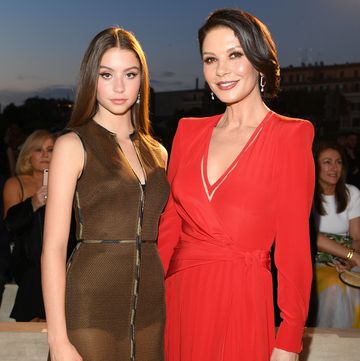Deciding to wear, or not wear, a bra is one of the most liberating decisions a woman can make when it comes to her attire. After all, we all know the beauty and comfort a well-sculpted, delicate bra can provide just as much as the relief that comes with whipping it off the moment you step through the front door.
Over the years, forgoing the bra has become a fashion statement in its own right, and caused preposterous (and, let's face it, downright, misogynistic) outrage from commentators who can't quite fathom a woman's right to choose how to dress, and not dress, her bust. Need we remind you of the ludicrous backlash over Florence Pugh's decision to #freethenipple in a voluminous pink Valentino gown earlier this year?
During the global health crisis The Crown actor Gillian Anderson revealed she'd stopped wearing a bra, resulting in widespread praise from her fans on Twitter.
'I can’t wear a bra. I can’t,' she told her 1.8 million Instagram followers during an Instagram Live. 'I’m sorry, there’s no... I don’t care if I reach my belly button... my breasts reach my belly button. I’m not wearing a bra anymore. It’s just too f***ing uncomfortable.'
With many of us getting used to hybrid working in the post-pandemic world, we still think it's an impressive feat if you manage to change out of our pyjamas in the morning, let alone pop on a boulder-holder before a meeting. Apart from during the occasional video conference call and Zoom session with our friends during lockdown, many of us were tempted to whip off our tops altogether, especially as our backs were hurting from being hunched over our laptops, Monday to Friday.
And while we do love our lingerie, from brands like La Perla and Skims, what we really can't be bothered with is boob sweat, chaffing, dagger-like under wires, and tired straps that dangle off our shoulders.
That's why we consulted a range of experts to find out the pros and cons of wearing a bra, and to ask whether we really should be giving our breasts some respite by going braless.
Ask yourself: When was the last time you went for a bra fitting? Well, you might want to consider booking an appointment as studies estimate that more than 80% of women are wearing the wrong bra size. To make matters worse, 70% of us are wearing bras that are too small, while 10% are wearing bras that are too big.
In addition, according to The Institute of Osteopathy there's evidence that larger breast/cup sizes can be a contributing factor to changes in your posture, which in turn may lead to musculoskeletal pain.
As a result, we spoke to Robin Lansman, osteopath and media spokesperson for the Institute of Osteopathy to find out whether bras help or hinder our boobs:
Is it a myth than poorly fitting bras cause back pain?
It depends on which type of bra you wear (an everyday bra, a sports bra etc) and a woman's build. There's also a myriad of factors that can contribute to a woman's back pain. For example, some women are less comfortable with their shape so may slump or arch their shoulders, which will have a big effect on how the back muscles affect their posture. When it comes to women’s musculoskeletal pain and breasts, it’s not just as a result of their size and bra.
Should we be wearing sport's bras all the time instead of pretty bras?
Not necessarily. Sports bras can often provide too much support and prevent the ribcage from functioning properly, therefore weakening back muscles and overstraining the breast ligaments. However, if you do regular exercise it’s important to have some support otherwise your risk damaging the internal structure of the breast. When you don't wear a bra during a workout, your back, neck muscles, and trapezius (a major muscle in the back) are also going to have to work a lot harder to balance out your weight.
Like changing swimming strokes, variety is good when it comes to wearing a bra. You should monitor how you’re feeling and what activities you’re doing that may require structural support more so than others. The key to wearing or not wearing a bra comes down to encouraging the body to learn how to work, not just bracing it tightly for a quick fix solution to back pain and postural problems.
Are bras purely cosmetic?
Not at all. The bra's main function is to support the weight and structure of the breast. However, women often have a lot of tension and stiffness localised where the bra strap is placed. Tight bras can also severely affect the ribcage, as well as cause back and neck pain.
If bra straps are loose and the back strap is tight, it will result in incorrect balance. People often rely on the wrong bit of the bra - the back strap - without thinking of the uplift support. For example, if you’re wearing an underwire bra without straps, it’s virtually pointless.
In conjunction with regular bra fittings, women who suffer from back pain should consult an osteopath on how they move, the effects of their working and home environment, and get a list of exercises to help their mobility. Bras help muscles and the spine get into a better position, but it’s not a one-stop solution.
If you go braless, what should you do to strengthen your core, back and shoulder muscles to prevent pain?
Stretching and activating muscles rather than strengthening is key to creating a strong muscle grouping. Floor-based breathing exercises which don’t demand anything on the posture will help, as well as using resistance bands that activate the muscles without overloading them.
An application of heat to stimulate blood flow to postural muscles should also be considered as well as a change of pillows. Consult an osteopath or GP for more information.
It's important to ensure that we give our bodies as much support as possible, regardless where we're working in this post-locdown world, whether that's practicing certain yoga poses to alleviate lower back pain or wearing a bra to support our breasts.
Ahead of the Tokyo 2021 Olympics, British female athletes were fitted with specially designed sports bras to help support their boobs and improve performance after 70% said they wanted better help to improve their breast health.
'Everything we do in elite sport is aimed at trying to give that little tiny improvement,' Dr Anita Biswas, senior sports physician and co-lead of female athlete health at the English Institute of Sport (EIS), previously told the Guardian.
With this in mind, we spoke to Carole Remy, communication manager from Empreinte, Pour Moi's assistant lingerie buyer Megan Horscraft-Jones, and senior garment technologist, Lois Siciliano, to find out their advice on whether to wear a bra at home.
Should we be wearing a bra while sat for prolonged periods of time at home?
'It's important to take care of your self esteem as much as possible, regardless of whether you're working from home or not,' says Remy.
'Wearing a bra is not only necessary when you are active and in motion. Full breast support provides comfort, above all, but also allows to relieve back pain. Even when you're doing your recommended 30 minutes of exercise every day, it's important to remember that when we walk our breast move 3 to 4 cm and even more so when you practice a sporty activity.'
Should we go braless for our backs if we are still working from home?
Remy notes: 'A breast can weigh more that a kilo when you are a D cup or above. The pressure on the whole body is huge, especially for the back. Remember that breasts are made up of fat, glandular and adipose tissues, and only the skin and the ligaments support them.
'If you feel uncomfortable in your bras, most likely the problem lies with the bra itself. Perhaps you are not wearing the right size or the quality of your bra is not good enough to provide all the support and comfort you need.
'When you wear a well fitted and textured bra, you should feel lighter, confident and almost forget that you are wearing one. While many women think that bra straps are the most important element of a bra to provide support, it's actually the back fabric.
'If you want to ditch your day-to-day bra and go braless all together, however, I'd advise opting for a sports bra or – ideally – how about trying a bra without under wiring? I suggest opting for a seamless or T-shirt bras which are really comfortable.'
Should we get measured for a bra?
'The breast evolves over the days and through life. It is always beneficial to go to a lingerie store to have your measurements taken, and be instructive to take all the tips and tricks from the fitting experts to feel good in your bra,' adds Remy.
'It's important to remember that investing in a good bra means choosing a product that lasts over time. A bra is a very intimate product: it blends with the body and therefore follows its shape especially the back.'
What are the signs that you need a new bra?
Horscraft-Jones and Sicilian say: 'We all have that favourite bra. One that quickly becomes the only one we like to wear, and with this we end up wearing it for much longer than we should. As much as we love our favourites, there comes a time when we just need to get rid of them.'
Here are the tell-tale signs of when to ditch a bra and invest in new:
- Shoulder straps play a vital role in supporting the weight of your breasts, but the elastic doesn’t last forever. Over time, both washing and wearing can stretch the fabric beyond all recognition. And, if you dry a wet bra by hanging it up by its straps, you’ll speed up the stretching process even further. By drying your bras flat you will help increase the life longevity. Bras that feature fully adjustable straps will help, but once the elastic has gone, it’s gone.
- A stretched out underband is more than just uncomfortable - it also means your bra won’t give you that perky lift you’re looking for. It is such a frequent problem that expert bra fitters suggest wearing new bras on the loosest possible hook. This allows for some stretching over time, improving the overall life span of the bra. Not sure if your underband is too loose? If you can easily fit more than one finger underneath your band, it is time to toss.
- If gaping at the top of the cups is a frequent problem for you, it could be down to your breast shape. If your breasts are teardrop or bell-shaped, for example, they will naturally have less volume at the top and more weight at the bottom. A balconette, demi or push-up will help give you more lift and support, or try a plunge style because the angled cups will give a much smoother fit.
- If you’ve noticed that your once-smooth underwire has now started to pull away from your body at the front, it means there isn’t enough room and your breasts are now lifting the wires up, up, and away.
Underwire that no longer sits flat means you’ve probably gone up a cup size and need to be refitted.
Are there any ways to prioritise sustainability with bra wearing and washing?
'Whether it’s your favourite lacy plunge or the most flattering lingerie set you’ve ever owned, you’ll want your delicates to keep their good looks and supportive shapes for as long as possible,' agree Horscraft-Jones and Sicilian.
'Over-washing your bra can damage the elasticity, which is essential for providing the proper support. And that’s true even if you wash your bra by hand like you’re supposed to. Over-enthusiastic wringing can distort the wires, abrase the wire casing and even make the wire poke through, potentially hurting your boobs.
'In terms of how often should you wash your bra, that all depends on what you’ve done while you’re wearing it. When it comes to normal use, every two to three wears is fine. Obviously that’s not the case if it’s a sports bra you’re wearing to an intense gym class or if it’s a hot summer’s day. If you’re particularly sweaty, you should wash the bra each wear by hand.'
When it comes to buying bras, we're ashamed to admit we can probably count on one hand how many times we've chosen to splash the cash on a well-fitted lace balconette bra than buying a round of drinks in the pub.
However, Rigby & Peller lingerie styling specialist Josie Fellows is here to explain why buying new bras should be seen as essential as visiting the dentist and not just another pay-day treat:
What are the health benefits of wearing a bra?
'If a bra band fits correctly and is firm, the weight of the bust will be distributed which means the major muscle groups in the back, neck and shoulders won't be put under any strain. In some cases, breathing can also feel easier as a correctly-fitted bra will lift the bust off of the ribcage. In addition, there's also the obvious effect that a well-fitted bra is good for self-esteem and confidence,' Fellows says.
Well, what makes a good fitting bra?
'There are 6 steps to ensuring a good fitting bra:
- Band – 80 per cent of the support comes from the back band, therefore this must feel firm and not tight.
- Wires – when fitting we have to ensure the wires are sitting away from the breast tissue and, instead, sit on the rib cage.
- Cups – we want the cups to encompass the whole bust ensuring there isn’t any overspill or gaping.
- Straps – only 10 per cent of the support of a bra comes from the straps. The straps are not there to hold the bust up - that is the job of the back band. They should sit comfortably on your shoulders, not digging in but not slipping off. A rule of thumb is that you should be able to fit two fingers under each strap comfortably.
- Bridge – the bridge of the bra (the centre front part) should ideally sit flat against the body.
- How it feels – being comfortable is the most important factor. If you feel uncomfortable in a bra, the likelihood is is that you won’t wear it. Therefore, a different style or shape may be better.
Should we be wearing a bra 24/7 or is it good to give our boobs a break?
'We wouldn’t recommend that you wear an underwired bra all day and all night. However, many of our clients find it comfortable to sleep in a non-wired bra in bed as it provides support, so it comes down to personal preference,' she adds.
Are bralettes actually better for us when it comes to support and structure?
Fellow notes: 'For a fuller busted lady, a bralette may not provide enough support and they would benefit more from wearing a well-fitted underwired bra. For smaller busts, bralettes are a great addition to a lingerie wardrobe but there are other shapes which would give better support and structure.'
Will going braless make our boobs sag?
'There’s no evidence that breast sagging is caused by not wearing a bra. Instead, there are a lot of biological and genetic factors that increase or decrease the likelihood of breast sagging,' reveals Fellows. 'We do, however, recommend that you wear a sports bra during sports as not doing so can increase the risk of damage to the Cooper’s Ligaments in your bust.'
Can underwiring in bras do any damage to our health?
'The most important thing when you wear an underwired bra is that the wire sits behind the breast tissue, never on it. The best way to check this is to gently press against your wire – if the wire bounces back, this is an indication that it is sitting on tissue, not the rib cage. Flexible wires and wires that have padded casing around them will also feel more comfortable.'
Are there some fabrics that are better for our skin than others when it comes to irritation?
'Similar to skin type and washing powder, we all react differently to different fabrics. Some clients can't wear lace and can also opt for cotton options,' says Fellows, adding: 'Rigby & Peller's Fit & Style process is a good way for clients to discuss any specific needs regarding skin sensitivity with a specialist.'

Katie O'Malley is the Site Director on ELLE UK. On a daily basis you’ll find Katie managing all digital workflow, editing site, video and newsletter content, liaising with commercial and sales teams on new partnerships and deals (eg Nike, Tiffany & Co., Cartier etc), implementing new digital strategies and compiling in-depth data traffic, SEO and ecomm reports. In addition to appearing on the radio and on TV, as well as interviewing everyone from Oprah Winfrey to Rishi Sunak PM, Katie enjoys writing about lifestyle, culture, wellness, fitness, fashion, and more.
